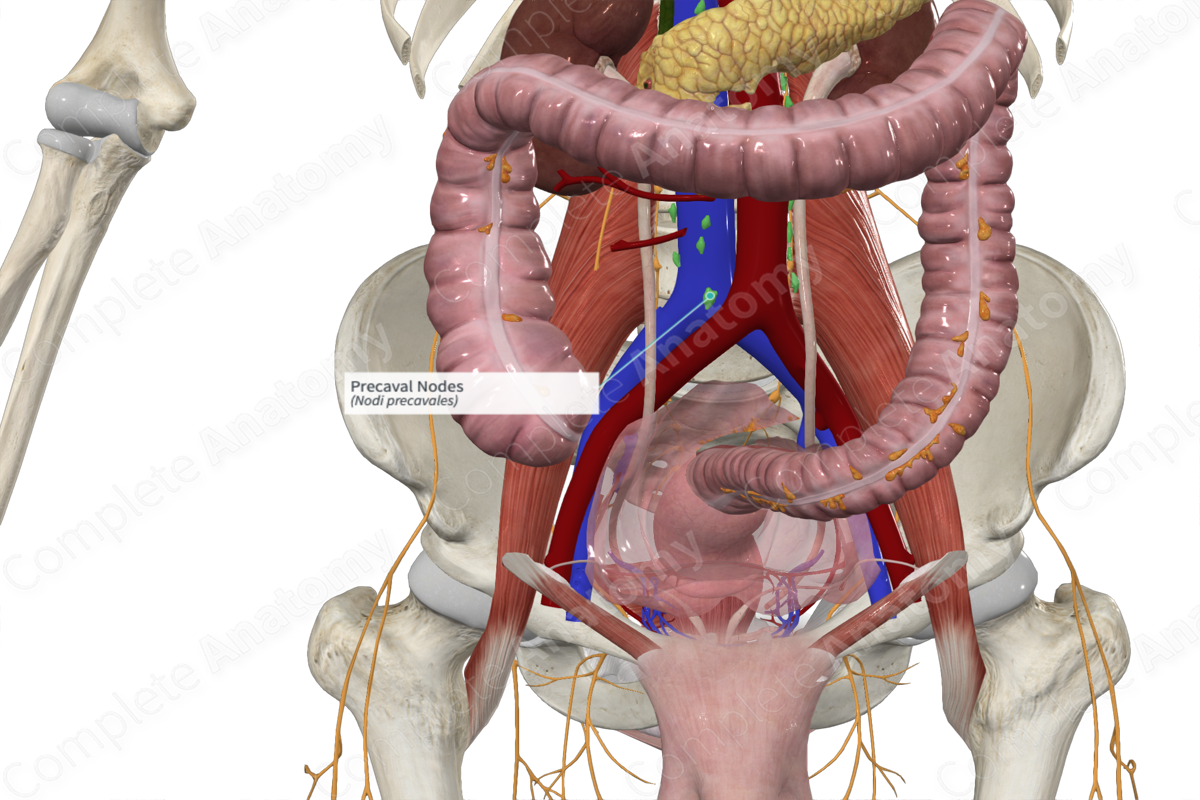
Quick Facts
Location: Anterior to inferior vena cava.
Drainage: suprarenal glands, kidneys, ureters, testes/ovaries, uterus, uterine tubes.
Direction of Flow: Right lumbar trunk > cisterna chyli > thoracic duct.
Related parts of the anatomy
Description:
Description: (Location & Drainage)
The precaval lymph nodes are located anterior to the inferior vena cava. They consist of three to eight nodes. One large node is usually found at the bifurcation of the abdominal aorta and another near the right renal vein (Földi et al., 2012).
The precaval lymph nodes receive lymph from organs of the abdomen and pelvis, including the suprarenal glands, kidneys, ureters, testes/ovaries, uterus, and uterine tubes. In addition, the precaval lymph nodes are often described as the continuation of the right common iliac lymph nodes that drain the lower limb.
The efferent vessels of the precaval lymph nodes join the right lumbar trunk, which returns lymph to the cisterna chyli.
References
Földi, M., Földi, E., Strößenreuther, R. and Kubik, S. (2012) Földi's Textbook of Lymphology: for Physicians and Lymphedema Therapists. Elsevier Health Sciences.
Description:
Description: (Location & Drainage)
The precaval lymph nodes are located anterior to the inferior vena cava. They consist of three to eight nodes. One large node is usually found at the bifurcation of the abdominal aorta and another near the right renal vein (Földi et al., 2012).
The precaval lymph nodes receive lymph from organs of the abdomen and pelvis, including the suprarenal glands, kidneys, ureters, testes/ovaries, uterus, and uterine tubes. In addition, the precaval lymph nodes are often described as the continuation of the right common iliac lymph nodes that drain the lower limb.
The efferent vessels of the precaval lymph nodes join the right lumbar trunk, which returns lymph to the cisterna chyli.



